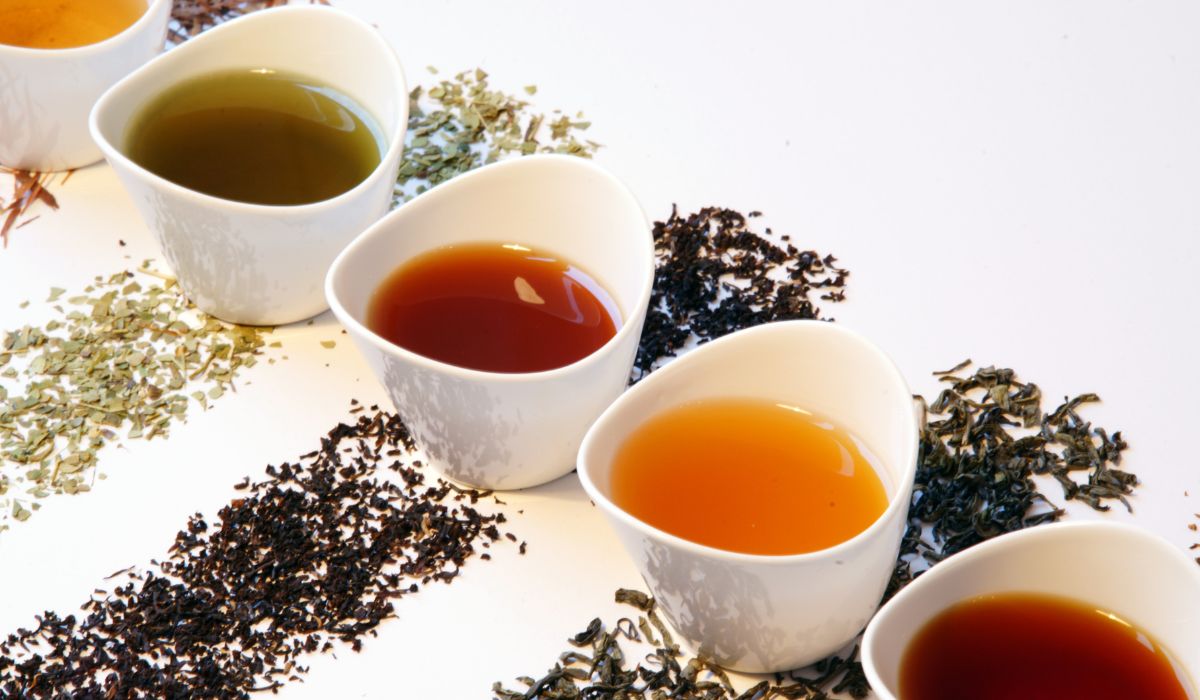
Ihr Leitfaden für die besten losen Grüntees im Jahr 2024
Versand am Februar 28 2024,
Einführung in den besten losen Grüntee
Beim Genuss einer Tasse Tee ist die Qualität des Blattes ebenso wichtig wie das Ritual des Aufbrühens. Unter den zahlreichen Teesorten nimmt grüner Tee aufgrund seines delikaten Geschmacks, seiner gesundheitlichen Vorteile und der Kunstfertigkeit seiner Herstellung einen besonderen Platz ein. Dieser Leitfaden führt Sie durch die Welt der Der beste lose grüne Tee , bei dem nicht nur die Aromen, sondern auch die Kultur, die gesundheitlichen Vorteile und die Nuancen erkundet werden, die jedes Blatt einzigartig machen.
💡 Wussten Sie, dass grüner Tee seit Tausenden von Jahren getrunken wird und im alten China ursprünglich als Heilgetränk verwendet wurde?
Die wichtigsten Teesorten (Übersicht)
Tee kann grob in verschiedene Sorten eingeteilt werden, basierend auf der Verarbeitung der Blätter der Pflanze Camellia sinensis. Während schwarzer Tee , Oolong-Tee und weißer Tee haben einzigartigen Charme und Vorteile, grüner Tee Und Kräutertee werden oft für ihre gesundheitsfördernden Eigenschaften gelobt.
Grüner Tee : Grüner Tee ist für seinen frischen, delikaten Geschmack bekannt und wird während der Verarbeitung nur minimal oxidiert. Dadurch bleiben seine grüne Farbe und sein antioxidantienreiches Profil erhalten, was ihn zu einem Favoriten unter Teeliebhaber .
Schwarzer Tee : Schwarzer Tee ist stärker oxidiert als grüner Tee und bietet einen kräftigeren Geschmack und einen höheren Koffeingehalt. Er wird heiß genossen und als Eistee , wodurch er für jede Jahreszeit vielseitig einsetzbar ist.
Oolong-Tee : Oolong-Tee ist teilweise oxidiert und bietet eine Geschmacksvielfalt, die zwischen grünem und schwarzem Tee liegt. Seine einzigartige Verarbeitung führt zu vielfältigen Aromen, von süß und blumig bis hin zu reichhaltig und röstig.
Weißer Tee : Der am wenigsten verarbeitete Tee wird für seine Feinheit, natürliche Süße und Eleganz geschätzt. Seine sanfte Aromen machen es zu einer anspruchsvollen Wahl für Teeliebhaber.
Kräutertee : Obwohl nicht aus der Pflanze Camellia sinensis hergestellt, Kräutertees (wie Mate-Tee Und Marokkanische Minze ) bieten eine koffeinfreie Alternative mit verschiedenen gesundheitlichen Vorteilen.
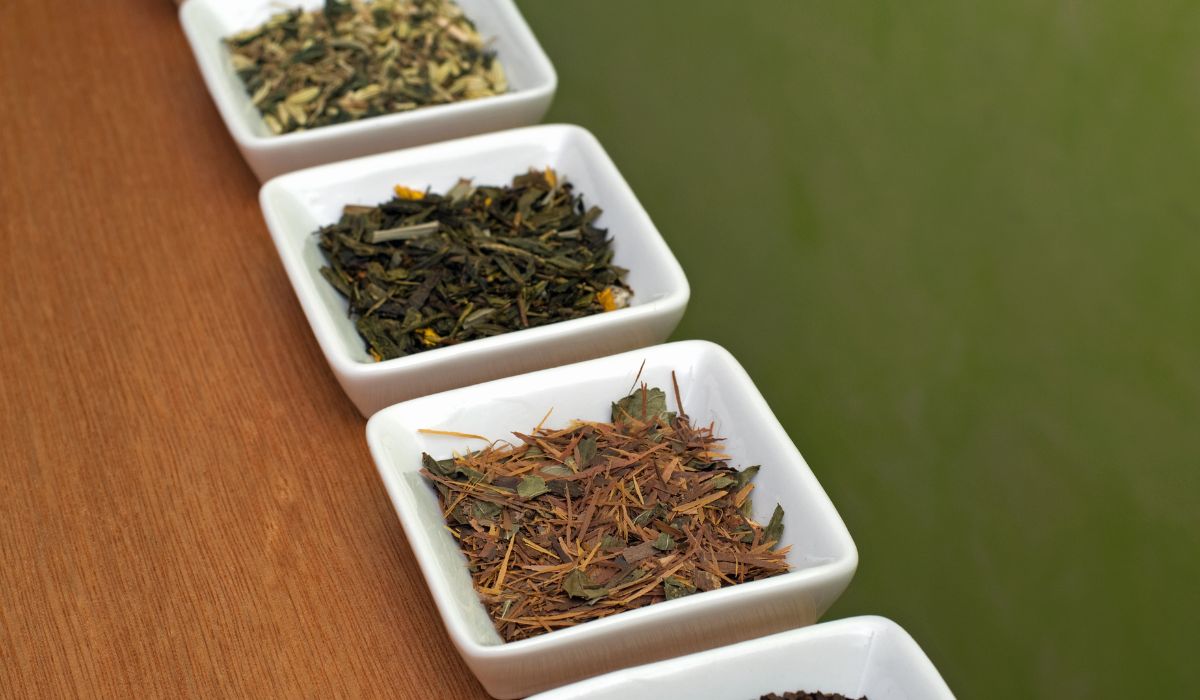
💡 Der einzigartige Geschmack von Oolong-Tee entsteht durch ein spezielles Verfahren, das das Trocknen in der Sonne und die Oxidation vor dem Einrollen und Drehen der Blätter umfasst.
Die Welt des Grünen Tees
Die Welt des grünen Tees ist riesig, und jede Sorte bietet ein einzigartiges Geschmacksprofil und eine Reihe von Vorteilen. Von den grasigen, süßen Noten von Sencha in die nussigen Tiefen von Drachenbrunnen Tee, Grünteesorten sind so vielfältig wie die Regionen, aus denen sie stammen.
-
Japanische Grüntees : Japan ist bekannt für seine Grüntees, mit Sencha am beliebtesten. Wer jedoch den Höhepunkt des Geschmacks und der Qualität sucht, Gyokuro sticht hervor. Gyokuro wird vor der Ernte beschattet, was seinen Chlorophyllgehalt erhöht und ihm einen reichen Umami-Geschmack verleiht.
-
Chinesische Grüntees : China produziert eine breite Palette von Grüntees, darunter Chun Mee , bekannt für seine pflaumenartige Süße und seinen weichen Abgang. Drachenbrunnen (Longjing)-Tee mit seinen charakteristischen flachen Blättern und der Jadefarbe bietet einen milden, süßen Geschmack, der sehr begehrt ist.
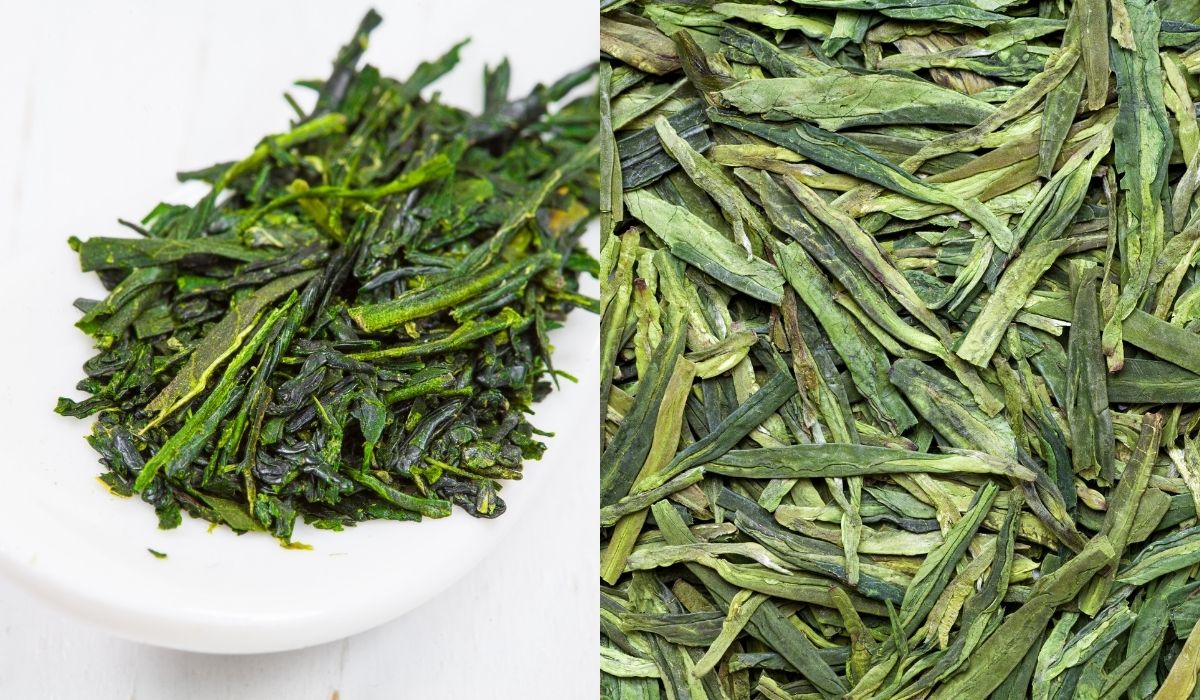
Bio-Grüntee : Entscheiden Sie sich für Bio-Tee bedeutet, Blätter auszuwählen, die ohne industrielle Chemikalien angebaut wurden, um eine reine, natürliche Tasse zu gewährleisten. Bio-Grüntee unterstützt einen gesunden Lebensstil und fördert nachhaltige landwirtschaftliche Praktiken.
Premium Loseblatt-Grüntees : Der Begriff "Premium" wird oft mit handverlesenen Tees während der optimalen Erntezeit , um sicherzustellen, dass die höchste Qualität und Geschmack. Diese Tees, darunter seltene und sortenreine Sorten, bieten eine vollmundige Tasse das ist Luxus und Sinneserlebnis zugleich.
💡 Gyokuro-Tee wird vor der Ernte etwa drei Wochen lang beschattet, was zu seinem einzigartigen Geschmack und seinem höheren Koffeingehalt als bei anderen grünen Tees beiträgt.
Gesundheitliche Vorteile von grünem Tee
Grüner Tee ist nicht nur ein Getränk; er ist eine reichhaltige Quelle an Antioxidantien und Verbindungen, die Ihre Gesundheit nachhaltig beeinflussen. So können Sie von der Integration von grünem Tee in Ihren Alltag profitieren:
- Gewichtsverlust : Grüner Tee kurbelt nachweislich den Stoffwechsel an und steigert kurzfristig die Fettverbrennung, was ihn zu einem wertvollen Verbündeten bei der Gewichtskontrolle macht.
- Stärkung des Immunsystems : Die Antioxidantien im grünen Tee, insbesondere Vitamin C und Ascorbinsäure, können Ihr Immunsystem stärken und Sie so besser gegen Krankheiten wappnen.
- Gehirnfunktion : Regelmäßiger Konsum von grünem Tee kann die Gehirnfunktion verbessern und das Gedächtnis, die kognitive Leistung und sogar die Stimmung verbessern.
- Regulierung des Blutzuckerspiegels : Grüner Tee kann zur Regulierung des Blutzuckerspiegels beitragen und so das Risiko von Insulinspitzen und Diabetes verringern.
- Gute Gesundheit und gesunder Lebensstil : Über diese spezifischen Vorteile hinaus unterstützt grüner Tee einen gesunden Lebensstil, trägt zur Herzgesundheit bei, verringert das Krebsrisiko und fördert die Langlebigkeit.
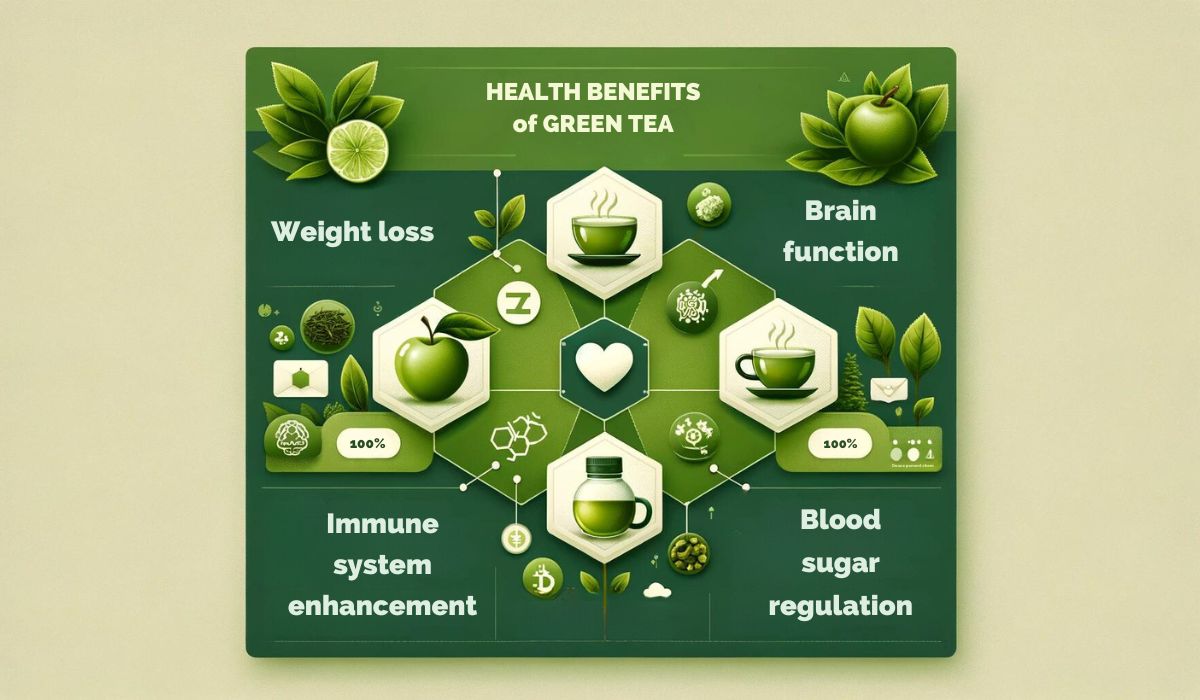
💡 Wussten Sie, dass grüner Tee ein Catechin namens EGCG (Epigallocatechingallat) enthält, das für seine krebsbekämpfenden Eigenschaften bekannt ist?
Die perfekte Tasse zubereiten
Die Kunst, grünen Tee zuzubereiten, ist genauso wichtig wie das Blatt selbst. So holen Sie das Beste aus Ihrem losen grünen Tee heraus:
- Loser Tee vs. Teebeutel : Die Wahl von losem Tee anstelle von herkömmlichen Teebeuteln kann Ihr Teeerlebnis deutlich verbessern. Lose Blätter ermöglichen eine vollere Entfaltung beim Ziehen, was zu einem komplexeren und nuancierteren Geschmack führt.
- Wassertemperatur und Ziehzeit : Die ideale Wassertemperatur für grünen Tee liegt zwischen 65 und 82 °C. Kochendes Wasser kann die Blätter verbrennen, was zu einem bitteren Geschmack führt. Für ein ausgewogenes Aroma sollte die Ziehzeit zwischen 2 und 3 Minuten betragen.
- Teezubehör : Eine French Press oder ein spezieller Teeaufgussbehälter sorgt für eine bessere Wasserzirkulation um die Blätter und entfaltet so das volle Aroma. Auch die Wasserqualität kann den Geschmack beeinflussen, daher wird gefiltertes oder Quellwasser empfohlen.
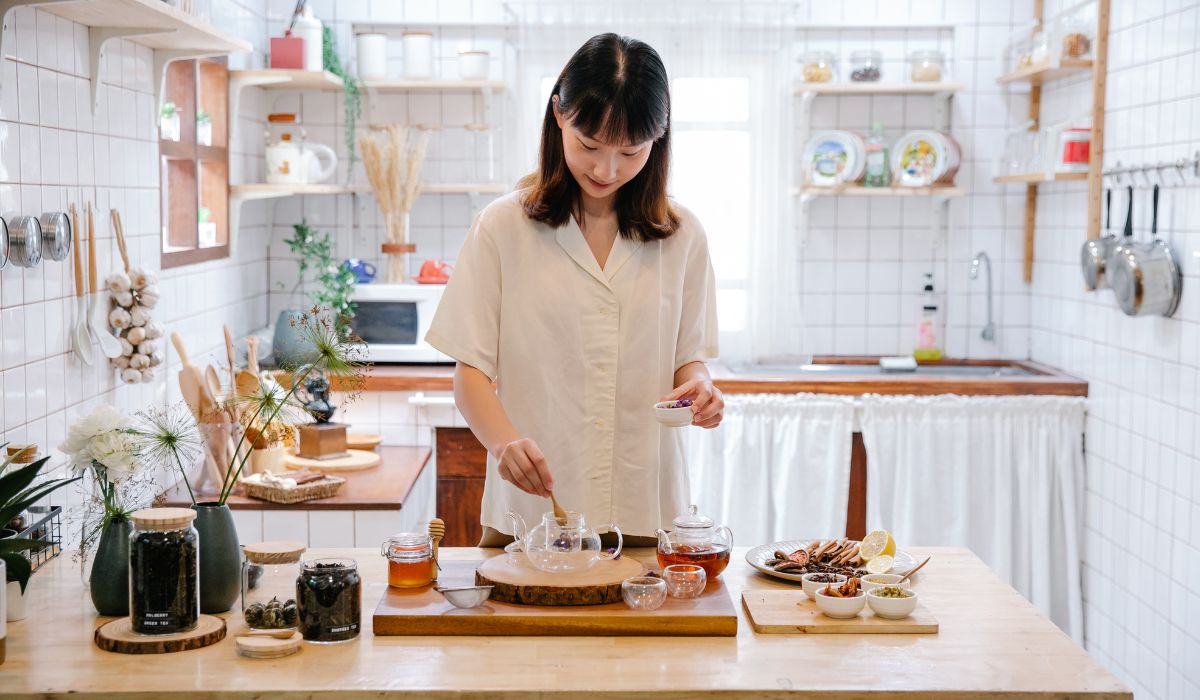
💡 Der Begriff „Ziehen“ bezeichnet den Vorgang des Einweichens von Teeblättern in Wasser, um ihre Aromen und Nährstoffe zu extrahieren, ein entscheidender Schritt beim Aufbrühen von Tee.
Teekultur und Teekonsum
Tee ist mehr als nur ein Getränk; er ist ein kulturelles Erlebnis, das sich von Region zu Region stark unterscheidet. Hier ein Einblick in die Teekultur und wie sie unseren Konsum prägt:
- Teeliebhaber und -liebhaberinnen : Für viele ist Tee eine Leidenschaft. In Tee-Communitys und -Foren können sich Interessierte über seltene Teesorten, Zubereitungstechniken und die neuesten Tee-Accessoires austauschen.
- Teetrinken : Das Erlebnis Tee zu trinken kann sehr persönlich sein. Manche bevorzugen die wohltuende Wärme von heißen Tees , während andere die erfrischende Spritzigkeit von Eistee . Die Tageszeit, die Stimmung und sogar das Wetter können die Wahl beeinflussen.
- Teegeschenke und Probierpakete : Tee ist ein aufmerksames Geschenk und bietet einen Vorgeschmack auf verschiedene Kulturen und Aromen. Teeproben sind besonders beliebt während der Weihnachtszeit und bietet ein kuratiertes Erlebnis mit erstklassigen und seltenen Tees.
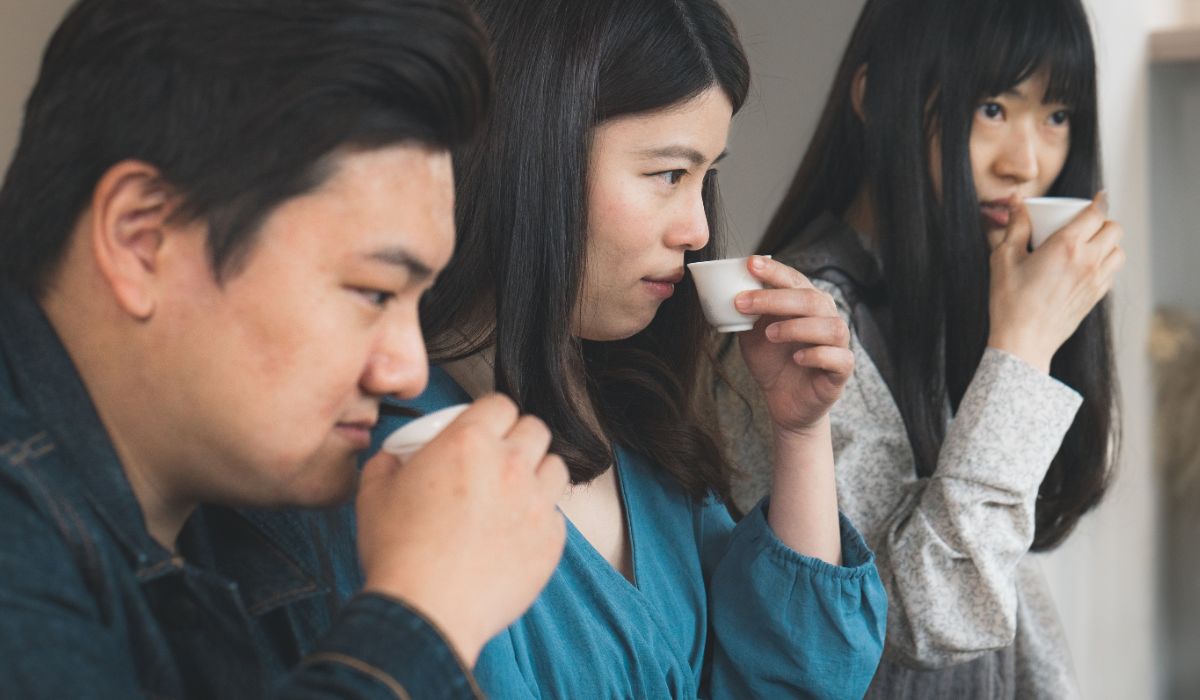
💡 In Japan ist die traditionelle Teezeremonie, bekannt als Chanoyu oder Sado, ein choreografiertes Ritual zur Zubereitung und zum Servieren von japanischem Grüntee, insbesondere Matcha, bei dem Ästhetik und Harmonie im Mittelpunkt stehen.
Einkauf und Nachhaltigkeit
Wenn Sie den besten losen grünen Tee kaufen, kann es hinsichtlich Qualität und Wirkung einen großen Unterschied machen, wo und wie Ihr Tee gewonnen wird.
-
Fairtrade- und Bio-Zertifizierungen : Achten Sie auf zertifizierte Bio- und Fairtrade-Tees. Diese Siegel garantieren, dass Ihr Tee ohne schädliche Pestizide und Chemikalien angebaut wird und garantieren, dass die beteiligten Bauern und Arbeiter fair behandelt und entlohnt werden. Dieses Engagement für ethische Praktiken trägt zu einem gesünderen Planeten und einer nachhaltigeren Teeindustrie bei.
-
Kostenloser Versand und Kundenbewertungen : Viele seriöse Teehändler bieten kostenlosen Versand für ihre Produkte an. Das macht die Auswahl an losen Teesorten einfacher und günstiger. Kundenrezensionen und -bewertungen helfen Ihnen außerdem, die besten Teesorten anderer Teeliebhaber zu finden. Dieses Feedback kann von unschätzbarem Wert sein, um Tees von außergewöhnlicher Qualität und Geschmack zu finden.
-
Vielfältiges Angebot an losen Tees : Ein guter Teelieferant bietet eine große Auswahl an Teesorten, von Klassikern bis hin zu seltenen und einzigartigen Sorten. Diese Vielfalt ermöglicht es Teeliebhabern, neue Geschmacksrichtungen zu entdecken und Tees zu finden, die ihren Vorlieben entsprechen. Ob Sie die grasigen Noten eines Sencha, das süße Aroma eines Dragon Well oder das reichhaltige Umami eines Gyokuro suchen – ein vielfältiges Sortiment garantiert, dass Sie für jeden Anlass den perfekten Tee finden.
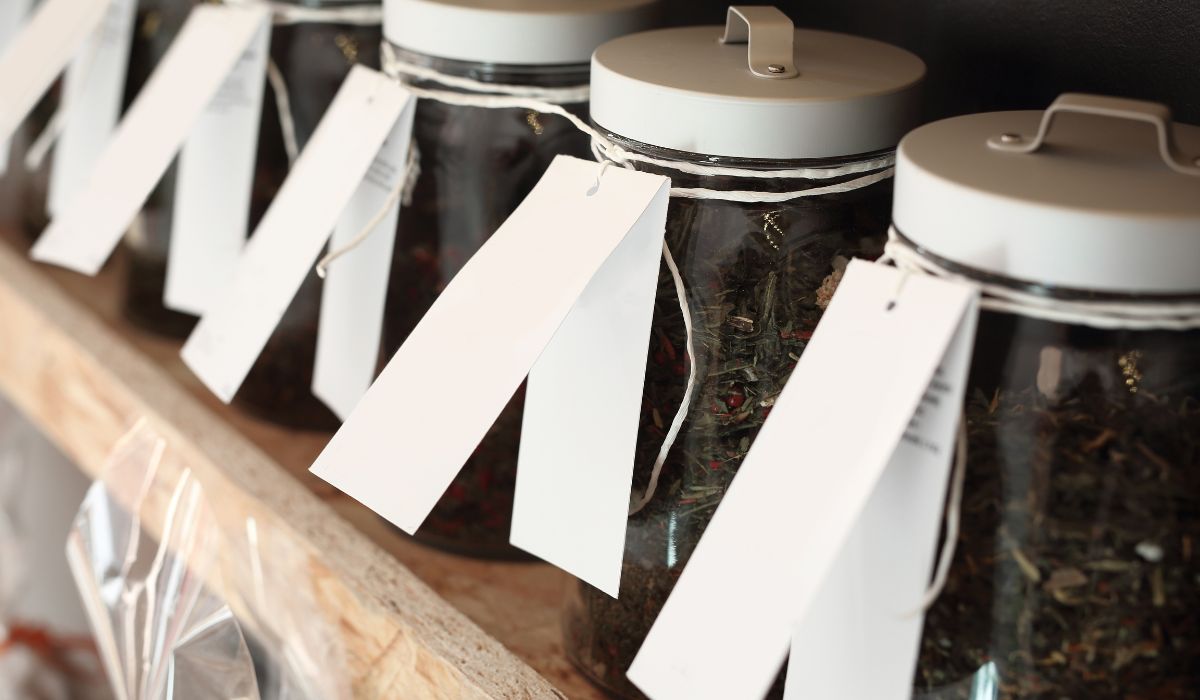
💡 Die Fair-Trade-Zertifizierung unterstützt nachhaltige Anbaumethoden und investiert in die Entwicklung der Gemeinschaft, um sicherzustellen, dass Teebauern eine bessere Zukunft für sich und ihre Familien aufbauen können.
Fazit: Die Welt des grünen Tees entdecken
Zum Abschluss unserer Erkundung des besten losen Grüntees erkennen wir die Tiefe und Vielfalt dieses uralten Getränks. Von seinen gesundheitlichen Vorteilen und seiner kulturellen Bedeutung bis hin zur Kunstfertigkeit jeder Sorte ist Grüntee für viele Menschen weltweit ein beliebtes Getränk. Zu den besten Teesorten zählt Bio-Uji-Matcha , ein Produkt, das höchste Qualität und Tradition Grüntees verkörpert.
Bio-Uji-Matcha : Dieser Matcha wird auf den berühmten Teefeldern von Uji, Japan, angebaut und ist nicht nur ein Tee; er ist ein kulturelles Erbe. Die sorgfältige Pflege bei Anbau und Verarbeitung unter Einhaltung strenger Bio-Standards garantiert, dass jede Tasse den reichen, weichen und umamireichen Geschmack bietet, für den Matcha berühmt ist. Mit Bio-Uji-Matcha genießen Sie ein erstklassiges Teeerlebnis und unterstützen nachhaltige Landwirtschaft und ethische Anbaumethoden.
Egal, ob Sie ein erfahrener Teeliebhaber oder ein experimentierfreudiger Neuling sind: Die Integration von Bio-Uji-Matcha in Ihren Alltag ist ein Schritt in Richtung eines gesünderen, bewussteren Lebensstils . Seine Vielseitigkeit, ob traditionell in einer Schüssel verquirlt oder als Zutat in Lattes und Smoothies, macht ihn zum perfekten Botschafter für grünen Tee.
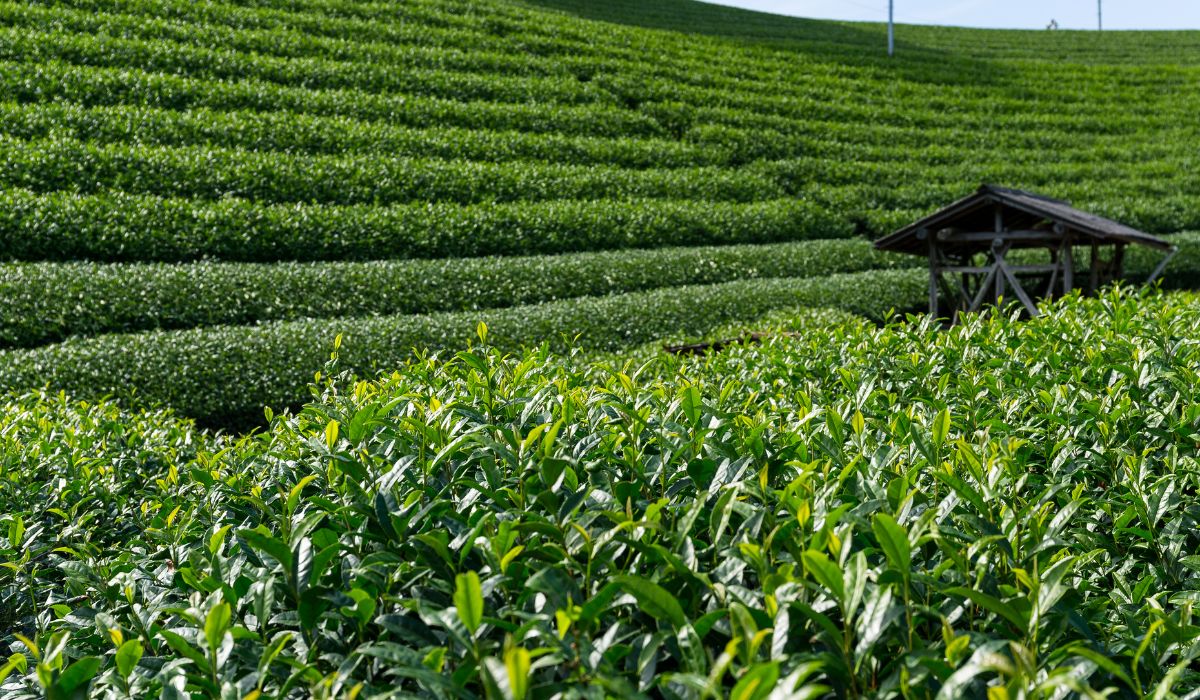
💡 Uji, eine Region in Kyoto, Japan, ist dank ihres optimalen Klimas, des fruchtbaren Bodens und der jahrhundertealten Teeanbautechniken für die Herstellung von Matcha höchster Qualität bekannt.

